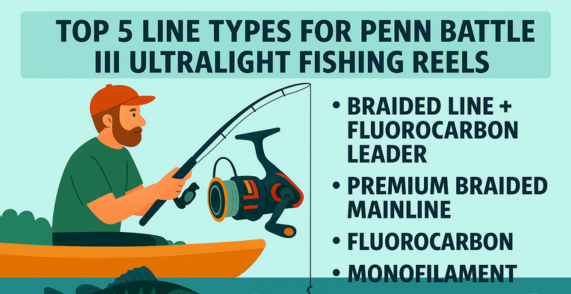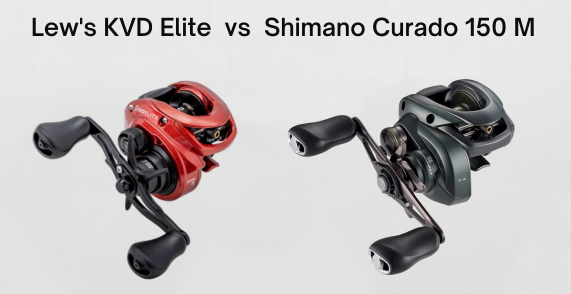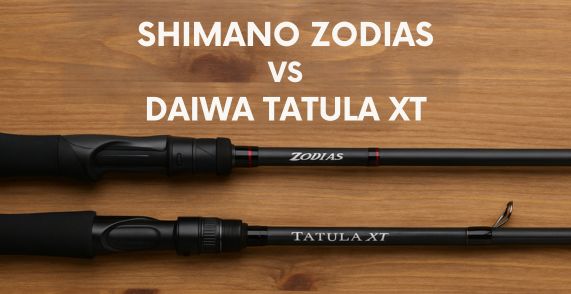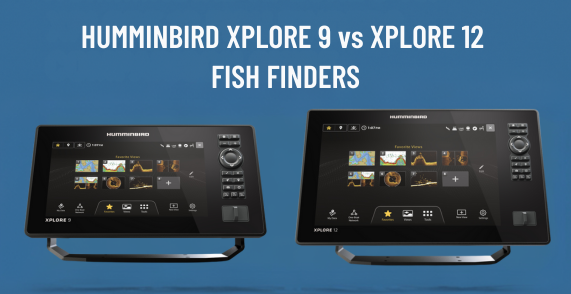In This Post
- 1 Key Takeaways:
- 2 Feel Every Bite: Why Line Choice Is Critical for Penn Battle III Ultralight Success
- 3 1. Braided Line + Fluorocarbon Leader: The Ultimate Power Combo
- 4 2. Premium Braided Mainline: Sensitivity & Distance Champion
- 5 3. Fluorocarbon Line: Invisible Advantage in Clear Water
- 6 4. Monofilament Line: Versatile Performer for Beginners and Veterans
- 7 5. Copolymer Line: The Balanced Approach
- 8 Perfect Line Pairings: Matching Your Penn Battle III to Water and Target Species
Key Takeaways:
- Braided line with a fluorocarbon leader provides the ultimate combination of sensitivity and stealth for Penn Battle III ultralight reels
- The Penn Battle III’s Superline Spool design is specifically optimized for braided mainlines without requiring backing
- Monofilament remains the most versatile option for beginners due to its forgiving nature and shock absorption properties
- Line selection should be based on water clarity, target species, and fishing technique
Feel Every Bite: Why Line Choice Is Critical for Penn Battle III Ultralight Success
The Penn Battle III ultralight series offers exceptional value in the spinning reel market, combining durability with performance features typically found in more expensive reels.
With its Full Metal Body construction and precision CNC Gear Technology, this reel works best when paired with the right fishing line.
Selecting the perfect line for your Penn Battle III ultralight model isn’t just about strength – it’s about optimizing your entire fishing system.
Fishing Zenith has tested various line combinations with these reels to determine which options truly excel. The right line can dramatically enhance your sensitivity to subtle bites, improve casting distance, and ultimately help you land more fish.
Here are the top five line choices that perfectly complement the Penn Battle III’s ultralight models (1000, 2000, and 2500 series), along with their specific advantages and ideal fishing scenarios.
1. Braided Line + Fluorocarbon Leader: The Ultimate Power Combo
1.1 Optimal Pound Test Combinations for Ultralight Fishing
The combination of braided mainline with a fluorocarbon leader represents the gold standard for Penn Battle III ultralight reels. This setup maximizes the strengths of both line types while minimizing their weaknesses.
For the Penn Battle III 1000 model, a 6-8lb braided mainline paired with a 4-6lb fluorocarbon leader offers the perfect balance.
The 2000 series works excellently with 8-10lb braid and 6-8lb fluorocarbon, while the 2500 model can handle 10-15lb braid with 8-10lb fluorocarbon leaders.
The thin diameter of braided line (typically 0.13-0.20mm for ultralight applications) allows you to pack more line on your spool while maintaining exceptional strength. This means you can fish lighter, cast farther, and still have the backbone to handle unexpected catches.
1.2 When This Setup Outperforms All Others
This combination excels in several key scenarios:
- Clear water with structure: The invisible fluorocarbon leader prevents fish from spotting your line, while the braid’s strength handles abrasive surfaces
- Long-distance casting: Braid’s thin diameter and slick coating achieve maximum casting distance
- Detecting subtle bites: The zero-stretch quality of braid transmits even the lightest nibbles
- Fishing around vegetation: Braid slices through weeds where other lines would get caught
1.3 Best Leader Connection Methods
The FG knot is considered the optimal connection between braid and fluorocarbon. While it takes practice to master, its slim profile passes smoothly through guides and maintains nearly 100% of the line’s strength. For beginners, the double uni knot or Alberto knot offer easier alternatives with slightly bulkier profiles.
2. Premium Braided Mainline: Sensitivity & Distance Champion
2.1 Top Braided Lines for Penn Battle III Ultralight Models
When fishing straight braid without a leader, select premium quality options that balance strength, diameter, and casting performance. The Penn Battle III’s Superline Spool design with rubber gasket eliminates the need for backing and prevents line slippage – a perfect match for braided lines.
Top braided line choices for Penn Battle III ultralight reels include:
- PowerPro Super Slick V2: Ultra-smooth finish for maximum casting distance with 0.15mm diameter (10lb test)
- Sufix 832 Advanced Superline: Exceptional abrasion resistance and reduced wind knots with 0.17mm diameter (10lb test)
- Daiwa J-Braid X8: Affordable yet high-performance option with a round profile at 0.16mm diameter (10lb test)
2.2 Perfect Situations for Straight Braid
Straight braided line without a leader works best in these specific conditions:
- Stained or muddy water: When visibility isn’t a concern, skip the leader for maximum sensitivity
- Heavy vegetation: Braid’s cutting ability shines when fishing lily pads or thick grass
- Topwater lures: Braid’s floating characteristic works well with surface presentations, though visibility can be a concern
- Deep water fishing: When fishing at depth, line visibility becomes less important
Remember that straight braid has significant visibility underwater, which can spook fish in clear conditions. Consider using darker colors (green, moss green) in stained water and lighter colors (white, yellow) in deeper or murky water for improved visibility to the angler.
3. Fluorocarbon Line: Invisible Advantage in Clear Water
3.1 Pound Test Recommendations by Target Species
Fluorocarbon as a mainline offers unmatched stealth for ultra-clear water situations. The Penn Battle III’s smooth drag system complements fluorocarbon’s limited stretch characteristics perfectly.
Recommended fluorocarbon pound tests by species:
- Trout and panfish: 4-6lb test (0.15-0.20mm diameter)
- Bass and walleye: 6-8lb test (0.20-0.23mm diameter)
- Light inshore saltwater: 8-10lb test (0.23-0.28mm diameter)
3.2 When to Spool Fluorocarbon as Your Mainline
Fluorocarbon excels as a mainline in these scenarios:
- Crystal clear water: When fish are extremely line-shy
- Vertical presentations: Fluorocarbon’s sinking quality keeps jigs and drop shot rigs in the strike zone
- Structure fishing: Superior abrasion resistance protects against rocks and wood
- Finesse techniques: Light bites require the direct connection fluorocarbon provides
The downside to fluorocarbon as a mainline is its stiffness and memory. To minimize these issues, avoid filling the spool completely (80% is ideal) and use line conditioner to reduce memory and improve castability.
4. Monofilament Line: Versatile Performer for Beginners and Veterans
4.1 Ideal Mono Specifications for Battle III 1000-2500 Series
Monofilament remains a popular choice for the Penn Battle III ultralight series due to its versatility and user-friendly characteristics. For these reels, choose monofilament with these specifications:
- Battle III 1000: 4-6lb test (0.20-0.23mm diameter)
- Battle III 2000: 6-8lb test (0.23-0.25mm diameter)
- Battle III 2500: 8-10lb test (0.25-0.28mm diameter)
Premium monofilament options like Berkley Trilene XL, Sunline Super Natural, and P-Line CXX offer excellent performance characteristics including reduced memory, improved abrasion resistance, and consistent diameter throughout the spool.
The HT-100 carbon fiber drag system in the Penn Battle III works particularly well with monofilament’s natural stretch, creating a smooth, forgiving hookset and fight that helps prevent pulled hooks and broken lines when fighting aggressive fish on ultralight tackle.
4.2 Topwater and Reaction Bite Applications
Monofilament truly shines in specific fishing applications that highlight its unique properties:
- Topwater lures: Mono’s floating characteristic keeps poppers, walk-the-dog baits, and other surface lures in the strike zone
- Crankbaits and reaction baits: The stretch absorbs sudden strikes and head shakes, reducing pulled hooks
- Beginner anglers: Forgiving nature means fewer break-offs and easier management of line twist
- Cold weather fishing: Mono maintains better flexibility in low temperatures compared to fluorocarbon
For anglers who primarily fish topwater or need a versatile all-around line, monofilament provides excellent performance at a fraction of the cost of specialty lines. Its natural UV resistance also gives it good longevity when properly maintained.
5. Copolymer Line: The Balanced Approach
5.1 Benefits Over Standard Monofilament
Copolymer lines represent the evolution of monofilament technology, offering better performance while maintaining mono’s user-friendly characteristics. When paired with the Penn Battle III ultralight reels, copolymer provides several advantages:
- Reduced stretch: 15-20% less stretch than standard mono for improved sensitivity
- Higher strength-to-diameter ratio: Thinner line for the same pound test
- Improved abrasion resistance: Better durability around structure
- Lower memory: Reduced line coiling for better casting performance
Premium copolymer options like Sufix Advance, P-Line CX Premium, and Berkley Trilene Professional Grade provide excellent all-around performance for the Penn Battle III ultralight series.
5.2 Best Fishing Scenarios for Copolymer Line
Copolymer line excels in versatile fishing situations that demand balanced performance:
- Mixed cover fishing: When moving between open water and light cover
- Varying water clarity: Good performance in both clear and slightly stained water
- Multi-species targeting: When you might encounter different fish on the same outing
- Finesse techniques with reaction potential: Drop shots, light jigs, or small crankbaits
5.3 How Penn Battle III Features Enhance Copolymer Performance
The Penn Battle III’s design features specifically complement copolymer line’s characteristics:
- Smooth drag system: Works with copolymer’s moderate stretch for controlled fights
- Precision gearing: Boosts the improved sensitivity of copolymer over standard mono
- Quality line roller: Reduces friction on the line during retrieves
- Balanced rotor: Provides smooth operation that minimizes line twist
For anglers wanting a single line solution that performs well across most fishing scenarios, copolymer offers an excellent compromise between the sensitivity of fluorocarbon and the forgiveness of monofilament.
Perfect Line Pairings: Matching Your Penn Battle III to Water and Target Species
The ideal line choice for your Penn Battle III ultralight reel depends on your specific fishing conditions and target species. Consider these scenarios when making your selection:
Clear Water, Finicky Fish (Trout, Panfish)
- Best Choice: Braid (6-8lb) with Fluorocarbon leader (4-6lb)
- Alternative: Straight Fluorocarbon (4-6lb)
Stained Water, Bass and Walleye
- Best Choice: Braid (8-10lb) with Fluorocarbon leader (8lb)
- Alternative: Copolymer (8-10lb)
Heavy Cover, Aggressive Species
- Best Choice: Straight Braid (10-15lb)
- Alternative: Copolymer (10lb)
Topwater Action
- Best Choice: Monofilament (6-8lb)
- Alternative: Braid (10lb) with Mono leader (8lb)
Beginner Anglers
- Best Choice: Monofilament (6-8lb)
- Alternative: Copolymer (6-8lb)
Remember that the Penn Battle III’s Superline Spool design works exceptionally well with braided line, but the reel’s smooth drag system and quality components will perform admirably with any of these line types when properly matched to your fishing conditions.
The versatility of the Penn Battle III ultralight series makes it an excellent platform for any of these premium line options.







